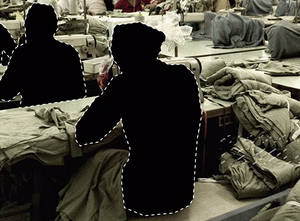EU needs to take action to clean up clothes industry

A blog by MEP Davor Skrlec
The clothing industry is arguably second only to oil as the world's most polluting industry[1]. From the many dyes and chemicals used which pollute the soil and water, to the pesticides used in cotton fields (without even mentioning the chemicals used in synthetic fabrics), the industry has proven to be deeply damaging to the environment.
This industry is also one of the thirstiest for natural resources. For example, it takes over 2,500 litres of water to make a t-shirt while a pair of leather shoes requires 16,000! Clothing also occupies vast hectares of land for its production, is responsible for around 3% of global CO2 emissions[2], and creates a significant amount of waste in each stage of its production. Every year, we buy about 73 million tonnes of garments globally - can you imagine the natural resources needed to meet this demand?
As a net importer of natural resources, Europe is highly dependent on other countries to supply land, water, materials and energy. This system is directly linked to air and water pollution, deforestation, climate change and land-grabbing.
As well as our imports, 12.2 million tonnes of textile waste is generated annually in the EU with over half of this amount either landfilled or incinerated[3]. Putting clothes to landfill releases methane, a powerful climate change causing gas that is over 20 times more damaging than CO2 emissions, and incinerating them releases a variety of toxic discharges to the air such as dioxins, a well-known carcinogenic.[4]
This is not only a waste of materials and natural resources, it is also a wasted opportunity to create more green jobs in Europe. Evidence shows that reuse and recycling create more jobs, and have a more positive effect on our environment than incineration and landfill. Yet the current policy framework is not enabling this sector to flourish. For example, textiles are not identified in the current waste legislation, meaning that there are no reuse or recycling targets across Europe for this key material. Setting recycling targets for textiles would result in Member States introducing better strategies to collect and sort unused textiles, ensuring that those materials that could be reused have a longer life.
In addition, the new circular economy package completely failed to make any progress on the resource efficiency agenda, including the voluntary target on resource efficiency, which had the potential to create 2 million additional jobs[5]. Sadly, Europe will continue to ignore the footprint of our use of key resources such as land and water, and will make zero effort to reduce these by reviewing certain policies. As the price of natural resources continues to fluctuate, impacting both industry and citizens alike, not having a strategy on such an essential area is a big mistake.
This week marks the third anniversary of the tragic events of Rana Plaza in Bangladesh. Join me, the Greens, and NGOs in the activities during this week - raise your voice and tell decision makers that making the clothing supply chain and end of life clean and fair is urgent. A green economy and green jobs need a supportive framework, and it is clear it won't happen without legislation.
[1] http://ecowatch.com/2015/08/17/fast-fashion-second-dirtiest-industry/
[2] How to be a fashion revolutionary, Page 12 http://fashionrevolution.org/wp-content/uploads/2015/11/HowToBeAFashionRevolutionary.pdf
[3] http://www.rreuse.org/wp-content/uploads/Making-CEP-more-ambitious-through-more-reuse-and-repair-FINAL.pdf[4] http://www.theguardian.com/environment/2000/may/18/pollution.uknews
[5] http://ec.europa.eu/environment/enveco/resource_efficiency/




